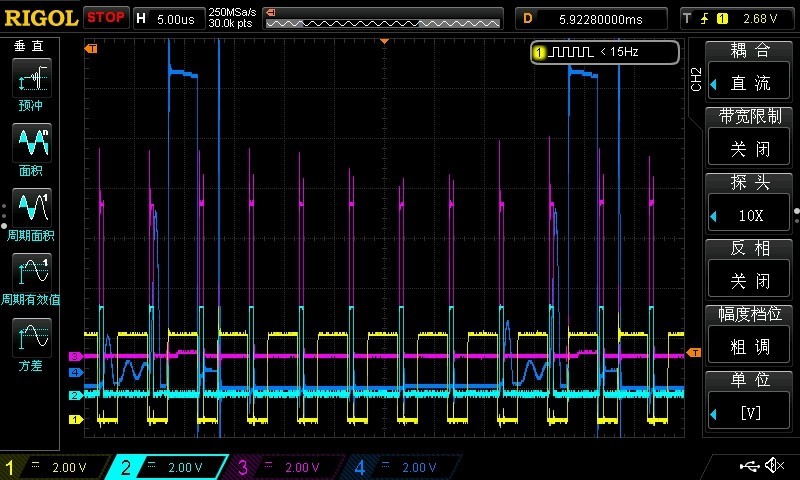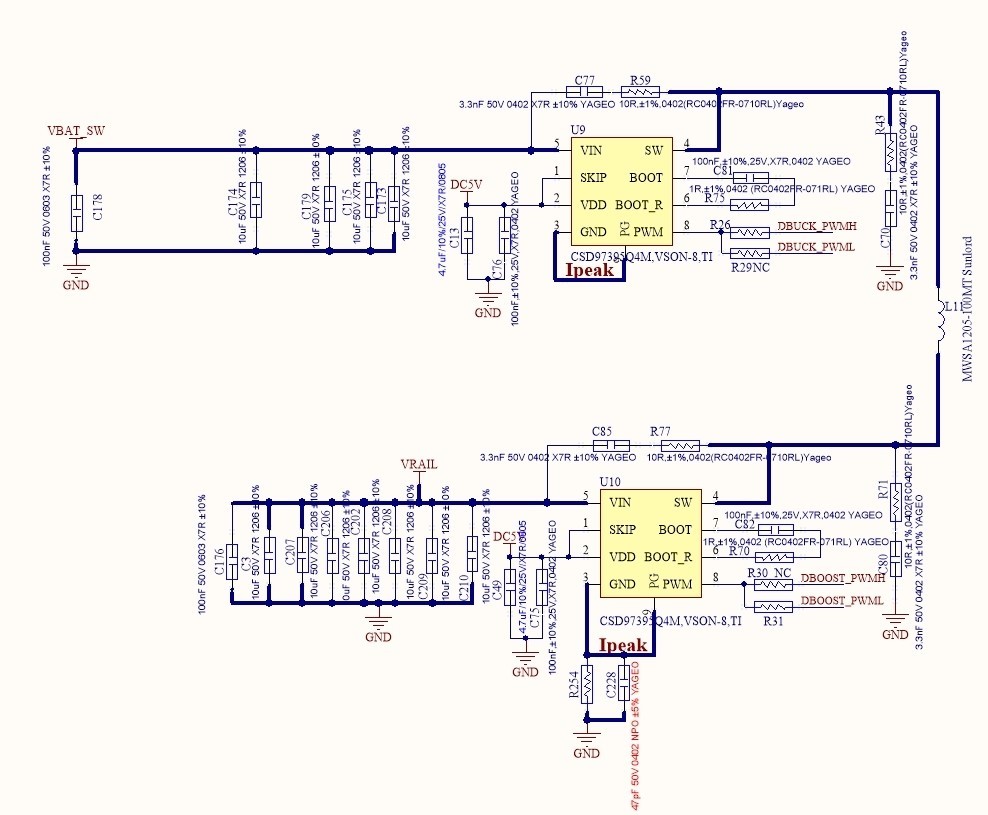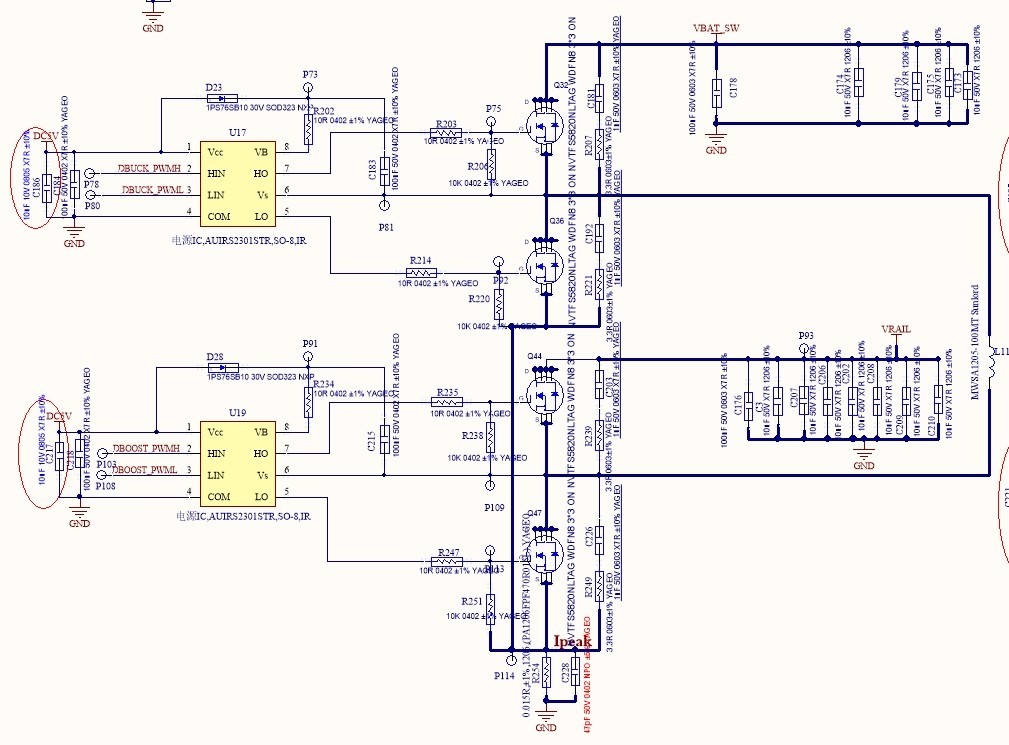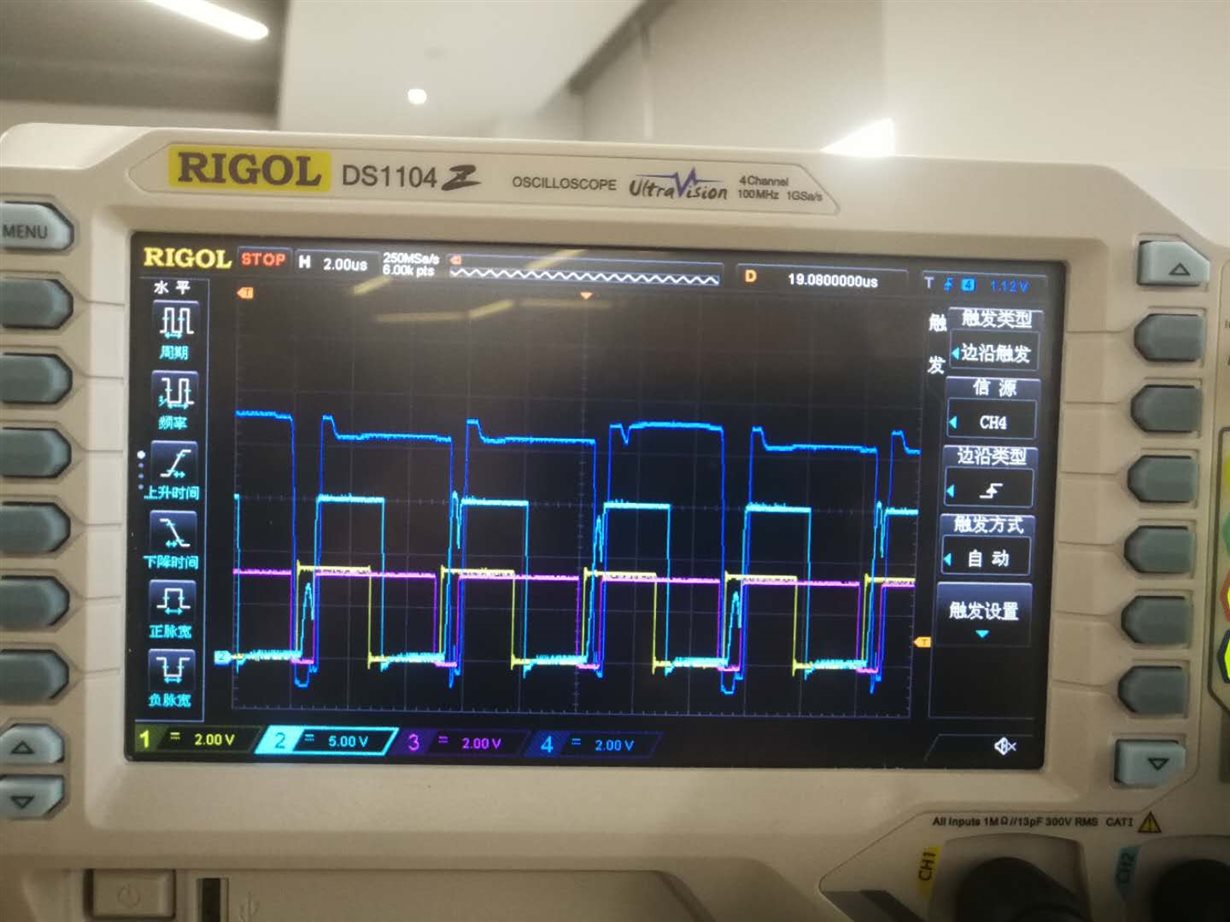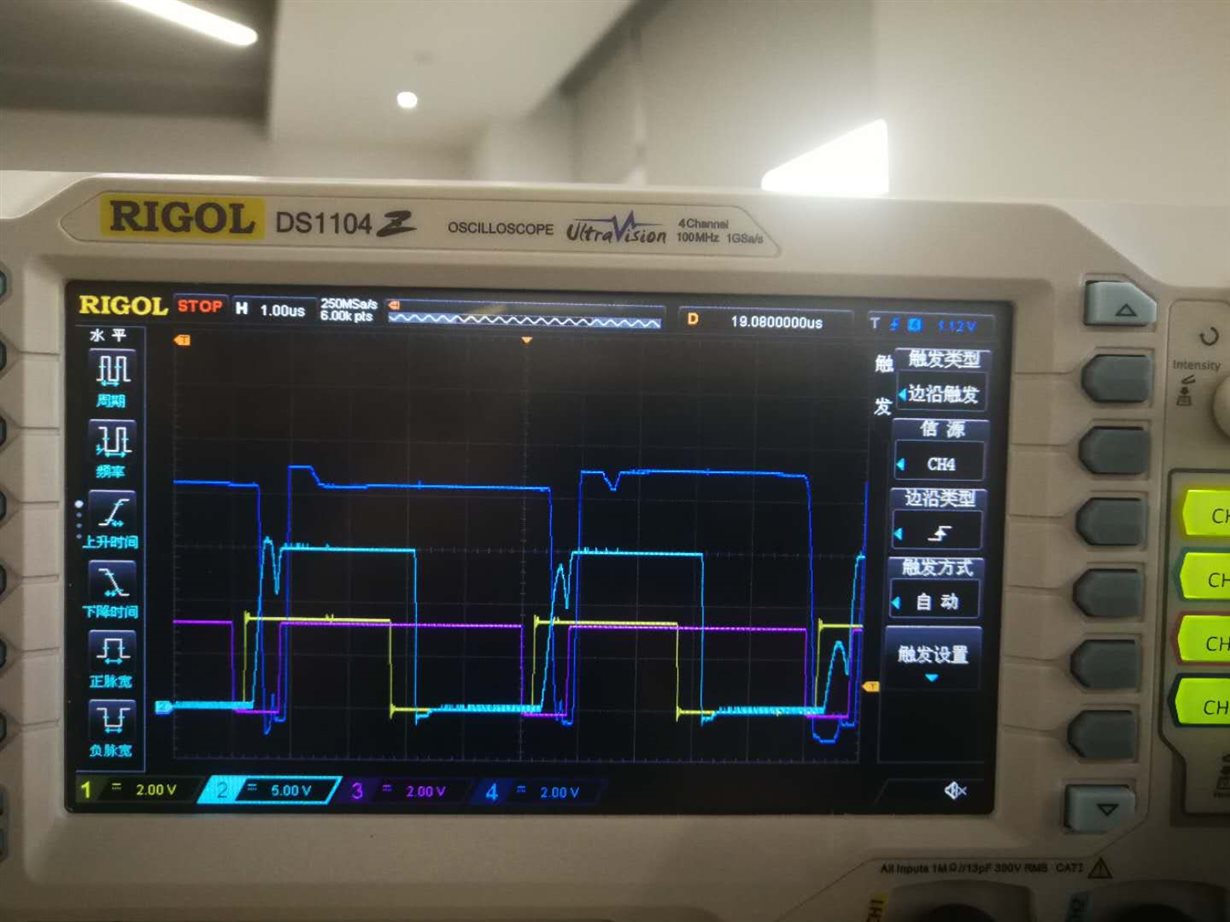Hi ti team,
Could you pls help us check if CSD97395Q4M can support buck-boost circuit?
if give PWM,skip always high level,then the control mosfet driver can be always high?
1, test condition:Vin 12V,Vout 3.3V/15W
no Vout 3.3V output
2, SCH as below and test wave form as below
1Ch,2Ch,3ch,4ch as U9PWM,U10PWM,U10SW,U9SW



